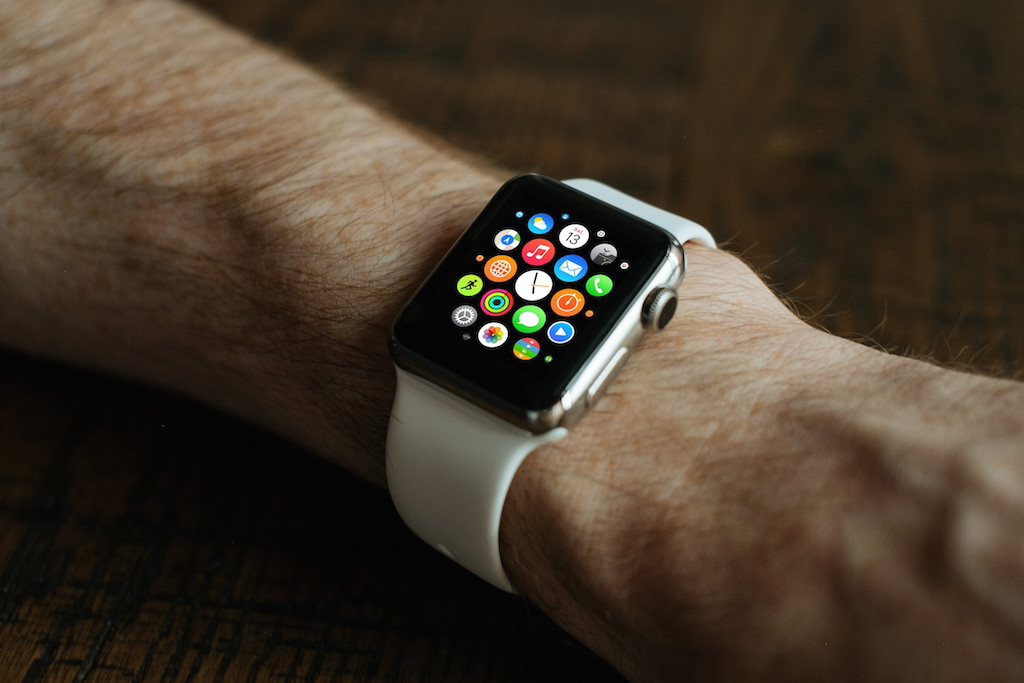I’ll be the first to admit that I wear a watch with a step counter. But, it’s the only piece of wearable technology I’ve ever used. Several months ago I noticed that I was getting in an extra 5,000 steps out of nowhere. I was very proud of myself; maybe taking it a step too far in bragging about my 15,000 step days. One day I tried to retrace these newfound steps. After going through my day, it dawned on me that my recent uptick in steps coincided with my return to playing the drums on a daily basis. These weren’t steps at all! These 5,000 steps were 5,000 flicks of my wrist in a 30 minute drum session. Imagine if I relied on this app for my calorie intake? I could’ve easily made a 10% swing in my “allotted” calories according to this app and my waistline would be the victim.
Is wearable technology worth the money?
I had the pleasure of interviewing Phil White, co-author of Unplugged, a book about wearable technology, measurable bio-markers, and evolving from tech dependence. In our discussion, he mentioned a 2017 in Medicine and Science in Sport and Exercise that found the range of accuracy of wearable technology to be between 40%-92%. That’s a HUGE range.
As a thought experiment, let’s give wearable technology the benefit of the doubt and use the 92% accuracy as an example. I buy a wearable device, input all the usual data – for how long I work out on a weekly basis, my age, and my weight. It gathers data such as for how long I stand on a given day, my sleep quality, and how many steps I take in a given day. It spits out a calorie recommendation for body composition maintenance of 2,200. Let’s say that number is only 92% accurate in excess but I religiously stick to my calorie recommendation. I’d be eating an excess of 175 calories in a given day. In this scenario, I would gain a pound of fat every three weeks. That’s over 17 pounds of excess fat in a year. And this is the really accurate wearable technology.
What data should you NOT track?
We love data. We love the instant feedback that a number gives us. It’s much easier to monitor our heart rate than to look at creating sustainable lifestyle habits for the long-term. But, what does heart rate actually tell us? Well, it only tells us how many times our ticker pumped in a given minute. This isn’t a measure of calories burned, VO2 max, metabolism, or fat loss. There is no “fat burning zone” and the standard 220 minus your age measure has proven to be wildly inaccurate.
If you’re a competitive endurance athlete, it may be worth using heart rate variability to maximize your training. Notice I said variability. Heart Rate Variability (HRV) can be a great way to monitor your stress levels, diet efficacy, and sleep. It will require multiple measures throughout the day & week. You can adjust your training volume accordingly. Simply strapping on a heart rate monitor during a training session tells you nothing.
What data should you track?
Lean body mass
Your lean body mass (muscle tissue) measured against your body fat will provide you a much more accurate picture of your actual health and is a greater indicator of mortality. Stop weighing yourself on the scale and hop on a more accurate machine. Your lean body mass can give you a more accurate measure of your basal metabolic rate (how “high” or “low” is your metabolism?)
Leg strength
Another great measure of long-term mobility and quality of life is leg strength. Going into middle age with a strong lower half will ensure a lifetime of increased independence.
VO2 max
VO2 max sounds like a really complicated test that would require an extraordinary amount of wearable technology. You can go that route, but there are other ways to measure your current aerobic capacity. This can be done using a simple six minute walk/run test for maximum distance. I like to use the “breath” test – measuring how long you can sustain an aerobic workout requiring heavy breathing.
Takeaway
If you like the fashion of wearable technology by all means buy some wearables. Don’t put any stock in the data, however. If you need a reminder to stand up and walk – your cell phone can do this for you. Strapping on a heart rate monitor during a workout – especially in a group setting – is pointless and potentially very dangerous. Individuals’ heart rate variability and capacity can vary wildly and to assume that a group of people should fall into the same “zone” could have potentially disastrous effects.
Furthermore, what if we began to enjoy movement for its own sake? What if we got out for a walk not to accumulate steps, but to get away from a screen and feel the sun on our faces? What if we stood up from our desks not because our watch told us, but because life is best lived actively and in motion?

